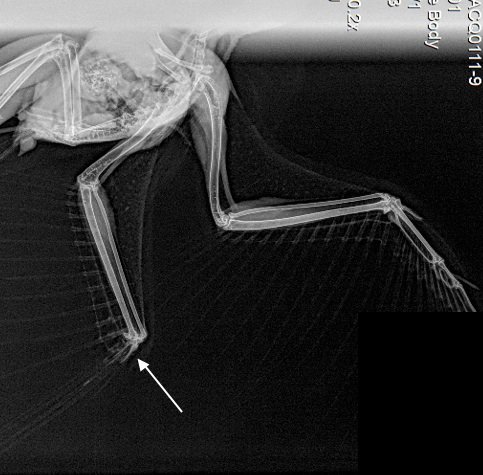The Wildlife Education and Rehabilitation Center of Morgan Hill
announced today it has filed a police report detailing a case of
barn owl mutilation.
City fined $21,600 for maintenance worker’s death
Council approves Rancho Hills final map
Police blotter: July 20 – July 27
G-Fest 33 video gallery: Watch what happened
View more photos of the 2011 Gilroy Garlic Festival at our
The Wildlife Education and Rehabilitation Center of Morgan Hill announced Tuesday it filed a police report detailing a case of barn owl mutilation.
An adult female owl was discovered by a concerned citizen June 20 on a residential driveway between Second and Fourth streets on Rosanna Street in central Gilroy, according WERC Executive Director Sue Howell.
An initial examination and X-ray indicated the bones and primary feathers below the wrist of the left wing were “most likely” intentionally removed, says Howell. The procedure is called “pinioning,” she said, and essentially handicaps the bird by rendering it incapable of flight.
Howell has never seen pinioning of a barn owl, but she believes the creature’s wing was deliberately crippled.
“If it was left out in the wild, it would have died,” she said.
According to Howell, pinioning is often performed on waterfowl or poultry. She said it prevents birds from flying away.
During the procedure, “the bird is not anesthetized,” Howell said. “They just cut if off.”
The rest of its body feathers were in very good shape when the owl was discovered, she said, indicating the animal had been in captivity. The lack of bleeding or infection around the wing area confirmed suspicions that mutilation was not caused by accident, she explains.
“We have all these other barn owls getting ready for release,” she said Tuesday over the phone. “And then you have this one that is beautiful, but has to remain in captivity for what somebody did just to have a pet … it’s such a hard case. It’s very emotional.”
Whereas clipped feathers grow back, Howell points out pinioning is permanent and will “doom” birds of prey.
With the exception of zoos or rescue organizations who possess special permits, Howell reminds the public that barn owls are protected under the Migratory Bird Treaty Act. The legislation was passed in 1918 and prohibits ownership of certain species of migratory birds.
Howell initially contacted all South County veterinarians in June to see if anyone had recently performed a “pinioning” procedure, or knew of anyone who had. This yielded no information, she said.
Howell also contacted the California Department of Fish & Wildlife.
“They checked their records, and no permits have been issued at all to anybody in the area for a barn owl,” she said.
Underscoring the Garlic Festival as “important to the community,” Howell did not want to “dampen” a happy time of the year for Gilroyans with sad news, which is why she waited to file a report with the Gilroy Police Department and notify the media.
Howell says she is concerned whoever maimed the flightless owl is a repeat offender, capable of striking again.
“Say the owl escaped, they might go for another one,” Howell said. “Hopefully we can find out who did this.”
The bird has not been named, and its age is unknown. The barn owl was in pain because of nerve damage upon arrival, though Howell confirms the bird is in good health and will not be euthanized. The creature can hop around and flutter a few feet, but will never be airborne again.
“She won our hearts,” said Howell Thursday. “Seeing her is bittersweet. There’s a sadness to her. But she’s starting to come around. Her spirit is coming back. She has dignity.”
The owl will stay at WERC’s facilities in Morgan Hill for now, until the right organization is located to provide the owl with a new home. Since the incident was made public, a number of people have been calling to see how the bird is doing, Howell said. She added many have inquired as to why the owl cannot stay in Morgan Hill.
Howell delineates, the bird could stay – but it would take a donation of a couple thousand dollars to build a permanent enclosure.
“We do rehabilitation,” she explained. “I don’t want to give up a rehabilitation enclosure for an educational animal.”
Howell hopes filing the police report will help expedite the process of finding more answers.
“It’s a beautiful bird, but it can never ever be set free. It just breaks your heart,” she said.
Anyone who has information about this incident is encouraged to contact the California Department of Fish & Game, toll free at 1-888-334-2258.














